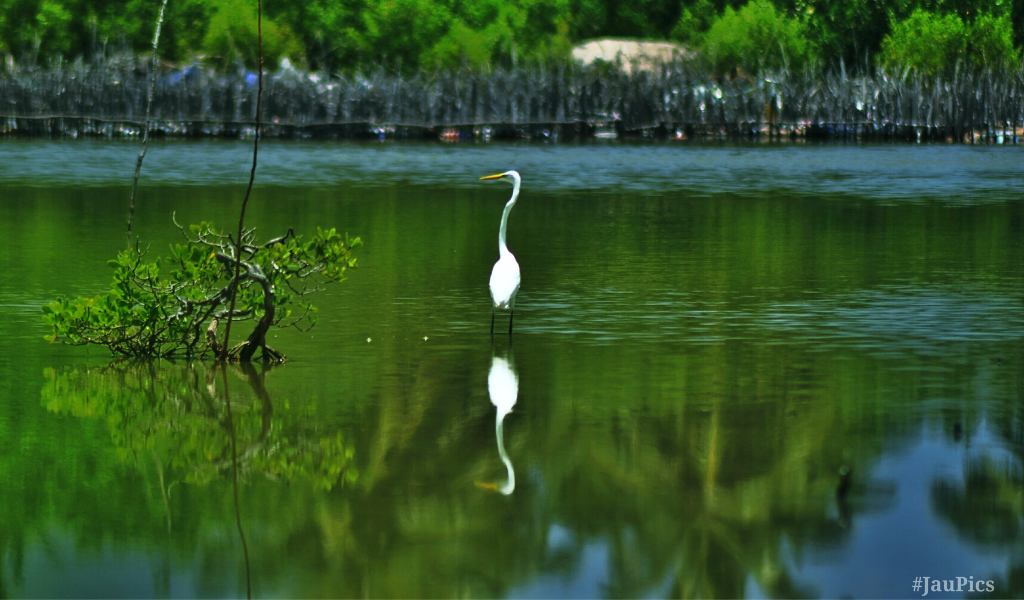

Get in Touch with Nature with These Must-Visit Places Across Maldives
Thursday 30th of June 2022
The Maldives, an island nation in the equatorial region, has something to offer every kind of traveler, whether they're planning a family vacation, a fun trip in the sun, a romantic getaway, or even a tranquil solo journey to rekindle their relationship with themselves.
The Maldives are a veritable paradise of unspoiled natural habitats teeming with a variety of unusual wildlife, flora, and fauna, especially for the environmentally conscious traveler. Have a look at some of the most eco-diverse locations in the Maldives for you to explore for a vacation in harmony with nature.
Huraa Mangrove Nature Reserve (HMNR) in Huraa, North Malé Atoll
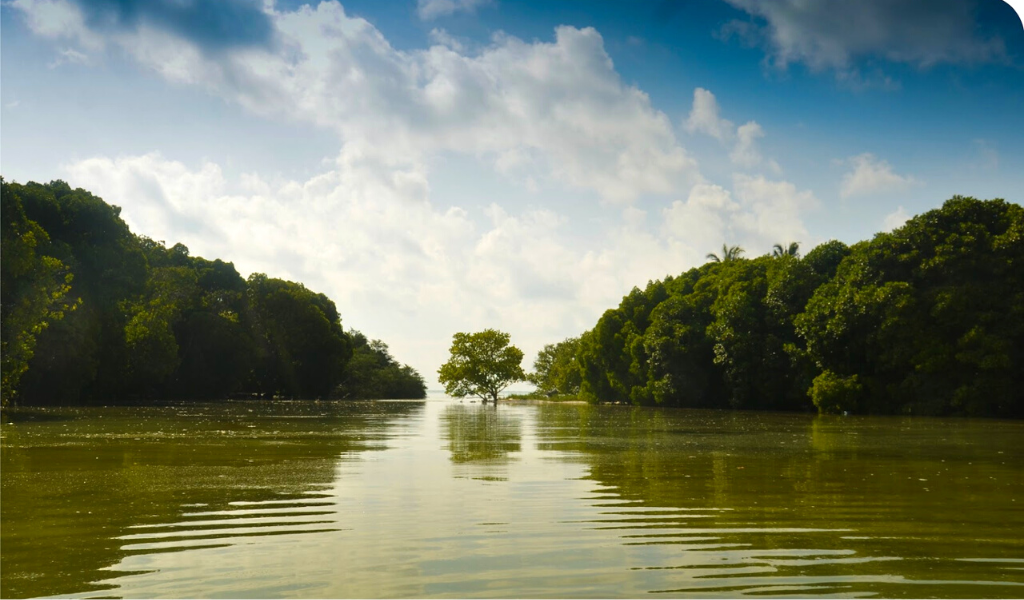
HMNR is a protected area that covers 5.2 hectares in Huraa, Kaafu Atoll, and is situated at the northern tip of the island. It is a favorite location for environmentalists and people who enjoy the outdoors, particularly birdwatchers because many of the Maldives' protected bird species frequently stop by the site. The IUCN recognizes the region's distinctive vegetation as home to numerous species of mangrove plants and thousands of surprisingly amiable mangrove crabs.
The Maldives' capital city, Male, is situated in Kaafu Atoll, and the HMNR has the distinction of being the only mangrove there. A short speedboat ride directly from the primary international airport (Velana International Airport) or from the capital Malé City makes it the Maldives' mangrove reserve with the easiest access.
Mathikilhi Eco Garden in Hulhumeedhoo, Addu Atoll
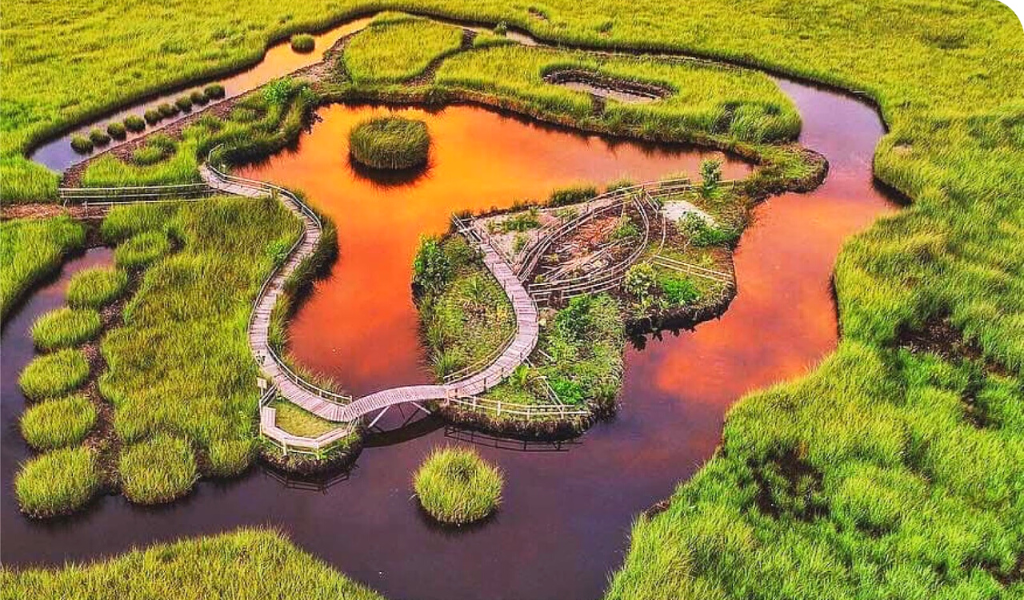
Mathikilhi Ecogarden, one of several protected areas in Addu Atoll, is situated in the MathiKilhi wetlands region at the junction of Hulhudhoo and Meedhoo. The area, which is the first Eco Garden in the Maldives, spans over 54 hectares, of which about 25 hectares are made up of two lakes and another roughly 50 hectares are covered in a lush, green carpet of lake sedge.
The renowned green "Mathikilhiye Fenfila Koaru" is one of those lakes. Numerous rare species of plants and animals, including tulips, ironwood, and screwpine, can be found in this Eco Garden. This wetland is home to a variety of fish species, including a sizable population of tilapia and other species.
One of the best things about Mathikilhi is how simple it is to descend the built-in walkway and take a warm, natural mud bath that is rich in valuable minerals and nutrients for your skin. The walkway itself has tiny bridges and arches that are great for taking pictures or just sitting on while admiring the beauty, peace, and serenity of the area.
It is also very simple to get to Addu City; all you need to do is take a flight that lands at Gan Island's Addu International Airport and then navigate your way through the various islands, which are linked by a link road.
Dhigemahkoda Nature Park at Hoandedhdhoo, Gaafu Dhaalu Atoll
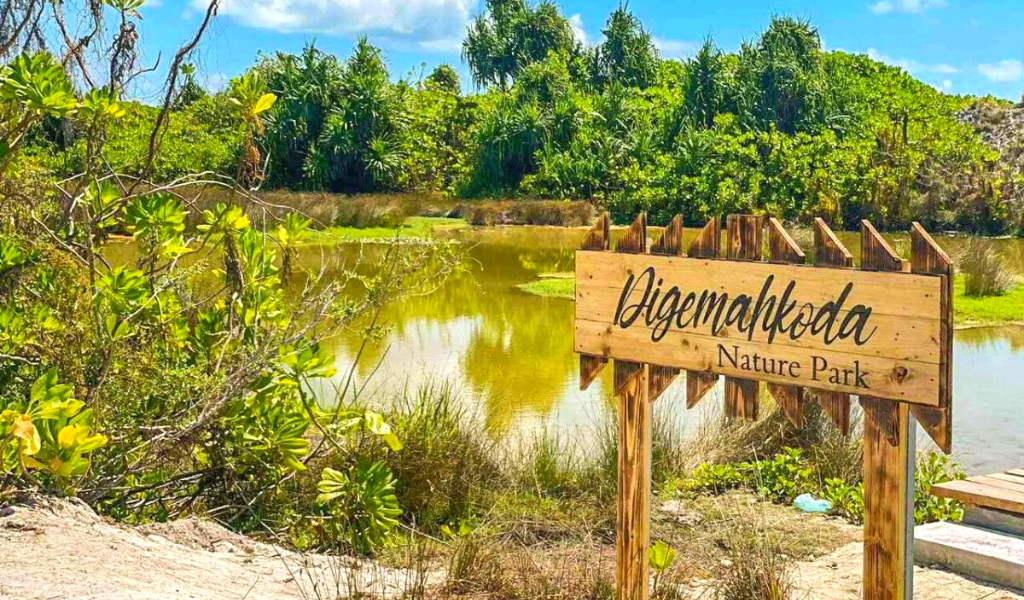
The Bank of Maldives provided funding for the construction of the Dhigemahkoda Nature Park as part of their community fund initiative. It is situated in the northeastern wetlands of Hoandedhdhoo Island of Gaafu Dhaalu Atoll, also known as Huvadhu Atoll.
The park is one of the most stunning, undeveloped areas of wild forestry in the Maldives that stretches as far as the eye can see. It includes mangroves, wetlands, and freshwater lakes. The park area has an 85-foot walkway, benches, and a barbecue area that was built without affecting the wetlands' natural ecosystem.
Due to the causeway that connects Hoandhedhdhoo and Madaveli, guests can stay on either island and still have simple access to the park. By flying to the airport on Hanimaadhoo Island and then taking a speedboat or ferry to Madaveli or Hoandedhdhoo, visitors can reach Haa Dhaalu Atoll with ease.
Baarah Wetlands in Baarah, Haa Alifu Atoll
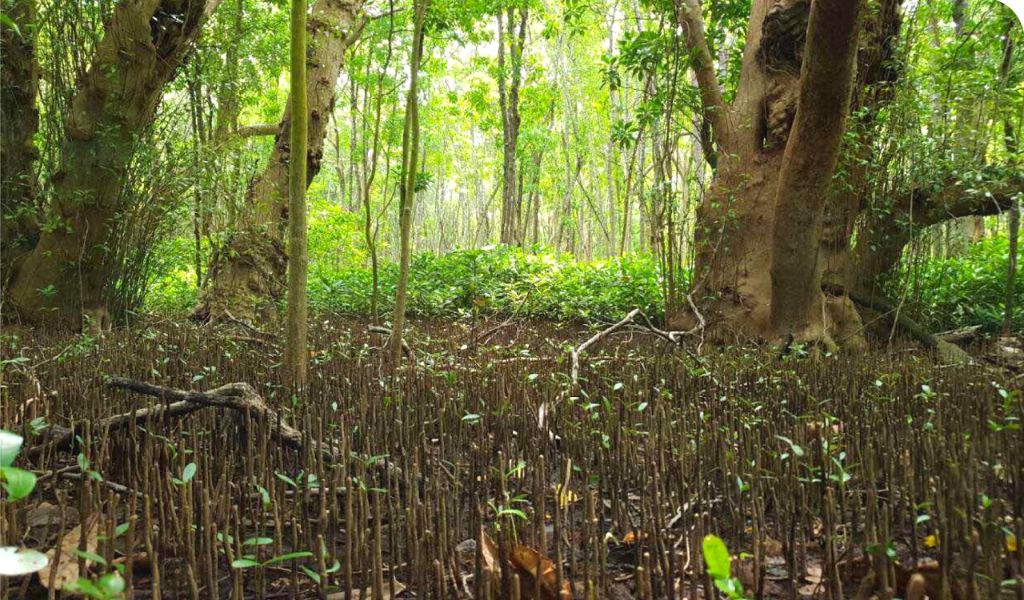
The Baarah Wetlands is the ideal destination for anyone who enjoys both history and nature. The Baarah Wetlands, which span 52 hectares, are home to a number of marine species and about ten bodies of water. One of these has vital ecological value because it is directly connected to the nearby lagoon and marine habitat. This region is home to a large number of fish, crabs, and other young marine organisms.
As one of the mangroves used by Sultan Al-Ghazi Mohamed Thakurufaanu Al-Auzam (Bodu Thakurufaanu), the Maldivian hero who led his people to freedom from Portuguese invaders, this particular lake is also very significant in the history of the Maldives. In between raids on the invaders, Bodu Thakurufaanu and his devoted crew of freedom fighters used this mangrove in Baarah as a hideout for the legendary war-vessel, the Kalhuohfummi, and they were crucial to the Maldivian campaign's success against the occupying forces.
Bodu Thakurufaanu and his band of freedom fighters fought a guerilla war for four years, sneaking onto islands in the dead of night, taking out the invaders there, and then leaving once more just before dawn. One island at a time, they gradually freed the Maldives until the Portuguese were finally routed in 1573, ending their lengthy 15-year occupation. Due to the domestic airport situated on Hoarafushi Island of the atoll, which is only a short boat ride away from the island, visiting the Baarah Wetlands is simple.
Kaashidhoo Wetlands in Kaafu Atoll
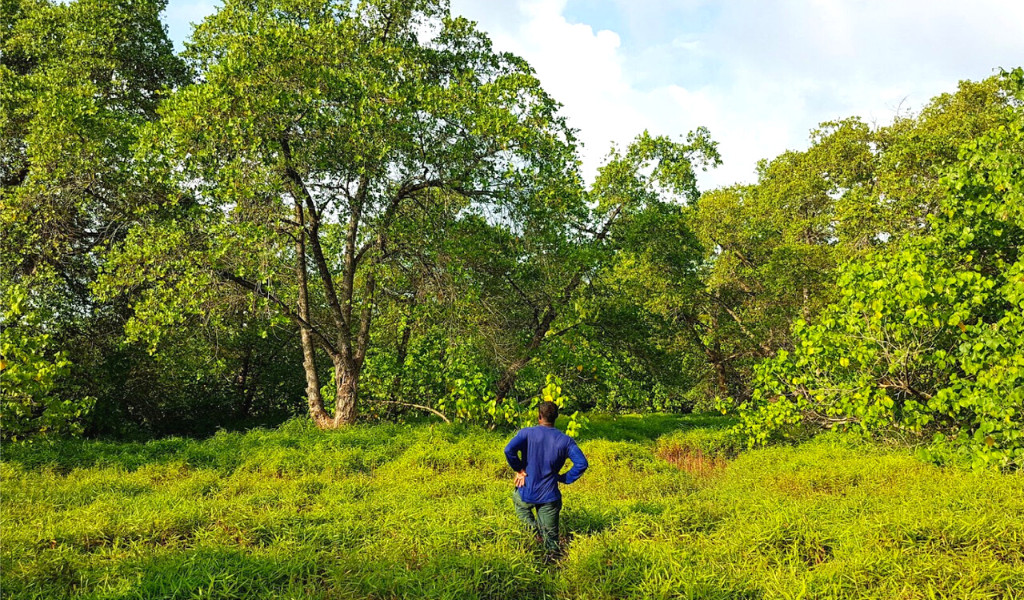
As one of only three islands in the Maldives with a native population of the Maldivian Black Turtle (Melanochelys trijuga thermalis, locally known as Kanzu Kahambu), an endangered and protected species in the country, the Kaashidhoo Wetlands in Kaafu Atoll is special for lovers of tortoises. Due to the abundance of screw pine and breadfruit in the area, Kaashidhoo Wetlands is where these magnificent creatures are most frequently sighted and reported. Due to the variety of life there, the 42 hectares of wetlands were given a protected status by the then-current government in February 2021.
Along with the wetlands, Kaashidhoo is one of the main producers of fresh produce for the capital city. The ruins of an ancient Buddhist monastery from the pre-Islamic era, known as the "Kuruhinna tharaagandu," are located on this island, making it one of the Maldives' most important historical sites. Over sixty coral stone structures were found during the 1996–1998 excavation of the 1900 sq km site, which uncovered a vast monastery complex. Kaashidhoo is conveniently reachable from Malé or the primary international airport via a ferry due to its location in the capital Atoll.
Kendhikulhudhoo Eco park in Kendhikulhudhoo, Noonu Atoll

The Kendhikulhudhoo Eco Park, which is in the wetlands area of the island's Noonu Atoll, was established thanks to the tireless efforts of the island's youth and the support of the entire community. It is clear that this park was designed with ecotourism in mind. This island's locals take excellent care of this protected area. This island's massive wetland area, which spans 494 hectares, was granted protected status by the state in 2019.
One of the best places to go for a vacationer who wants to give back to nature as much as they receive from her is the island community, which keeps constructing walkways, benches, viewing platforms, and other recreational facilities at the park. Volunteer to help with the regular upkeep or augmentation of the park for a trip that is more than just rest and recreation. The quickest way to reach this well-liked and well-maintained park on Kendhikulhudhoo Island is through Maafaru International Airport in Noonu Atoll.
Cover Photo: Ocean Sentry
Article Ref: Visit Maldives